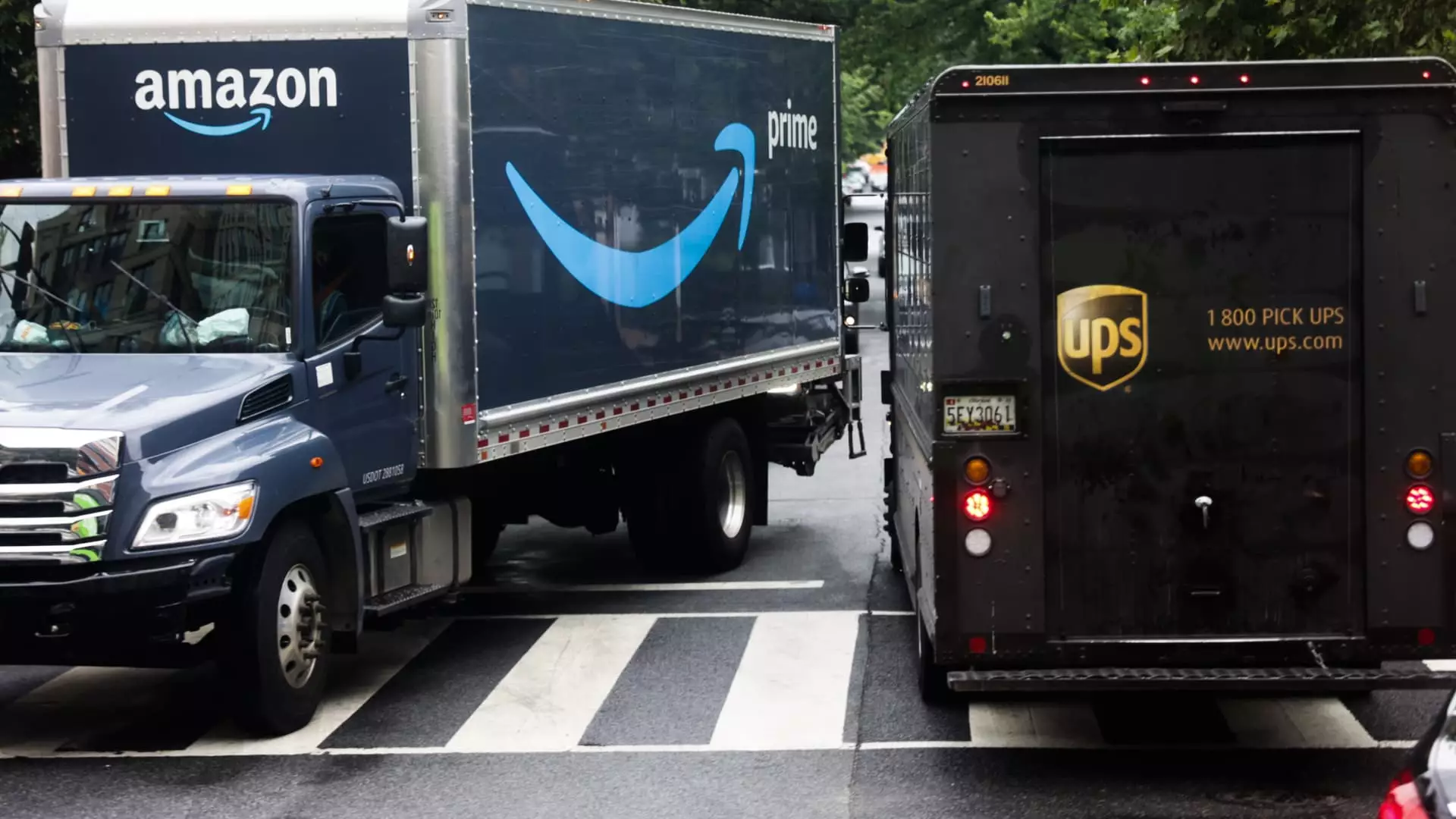In an unexpected turn of events, United Parcel Service (UPS) saw its shares tumble more than 17% on a Thursday that shook investors to their core. This decline followed the company’s announcement of disappointing revenue projections for the upcoming year and the revelation that it intends to significantly reduce its delivery obligations to Amazon, its most substantial client, by over 50%. Such stark changes come at a time when major corporations are fine-tuning their financial realities amid a volatile market. The announcement during UPS’s fourth-quarter earnings call indicated not only an urgent need for restructuring but also served as a precursor to potentially larger upheavals in the logistics industry.
UPS disclosed an impending agreement with Amazon indicating a substantial decrease in delivery volume by the latter half of 2026. This decision could signal significant shifts within the industry, considering Amazon’s historical role as a driver of logistics demand. However, UPS’s Chief Executive Officer, Carol Tomé, underscored the company’s objective to enhance profitability amidst evolving business dynamics, suggesting that Amazon, while being a large client, has surprisingly not been the most lucrative one for UPS.
The dynamics between UPS and Amazon are layered and complex. On the one hand, Amazon’s dependence on major carriers underscores the vital role third-party logistics providers play in its distribution chain. On the other hand, as Amazon continues to evolve its logistics capabilities from a reliance on outside providers to a more autonomous system, the implications for UPS become increasingly complicated. Tomé pointed out that Amazon’s business model is “dilutive” to UPS’s domestic profit margins, raising concerns about the sustainability of such partnerships.
In light of these changes, UPS is reconfiguring its U.S. network and initiating multi-year efficiency programs designed to yield approximately $1 billion in savings. Such strategic realignments underscore UPS’s proactive approach to securing its market position and ensuring long-term viability. Yet, it raises questions about the delicate balance between maintaining business relationships and the pursuit of profitability that may necessitate difficult choices.
While UPS grapples with its strategic shifts, Amazon has showcased its commitment to building an independent logistics network, particularly after experiencing delivery issues during peak periods in 2013. Over the years, Amazon has invested heavily in creating a robust in-house logistics framework, encompassing a fleet of vehicles and a network of last-mile delivery services. This push for autonomy has enabled Amazon to dictate the terms of its logistics operations, allowing for improvements in efficiency and customer satisfaction. Consequently, Amazon has gradually reduced its reliance on UPS and other third-party carriers, often opting for its in-house solutions.
This ongoing transition strengthens Amazon’s position in the logistics landscape, placing additional pressure on traditional carriers like UPS and FedEx. As Amazon continues to deliver more of its packages internally, UPS must strategically reconsider its client portfolio and service offerings to maintain relevance in a rapidly changing landscape.
In light of these challenges, UPS’s recent strategic moves demonstrate its recognition of the need for transformation. The company has started to focus on more profitable delivery segments, seeing an increase in volume from emerging retailers such as Temu and Shein. These changes illustrate a shift towards capturing markets that improve revenue potential, thereby balancing out the drawbacks of lower-margin contracts with larger clients like Amazon.
However, concerns remain regarding how these strategic shifts will resonate across the broader market. The logistics sector is increasingly competitive, and UPS must not only adapt to external pressures but also internal growth challenges. For instance, the layoffs of 12,000 employees aimed at achieving cost savings indicate that UPS is not merely looking to maintain its existing operational model but is actively seeking to reshape its workforce to be more efficient.
The recent updates regarding UPS’s performance and strategic direction highlight the intertwined nature of client relationships and profitability within the logistics industry. As UPS and Amazon navigate their complex relationship against the backdrop of broader market trends, the outcome of these challenges will likely dictate their trajectories moving forward. For UPS, the road ahead involves not only recalibrating its partnerships but also adapting to ever-increasing competition from within the logistics realm. As the industry evolves, the implications of these shifts will resonate widely, affecting not just the participants involved but also the customers and markets they serve. The true test for UPS lies in its ability to adapt to these changing dynamics while maintaining efficiency and profitability.

